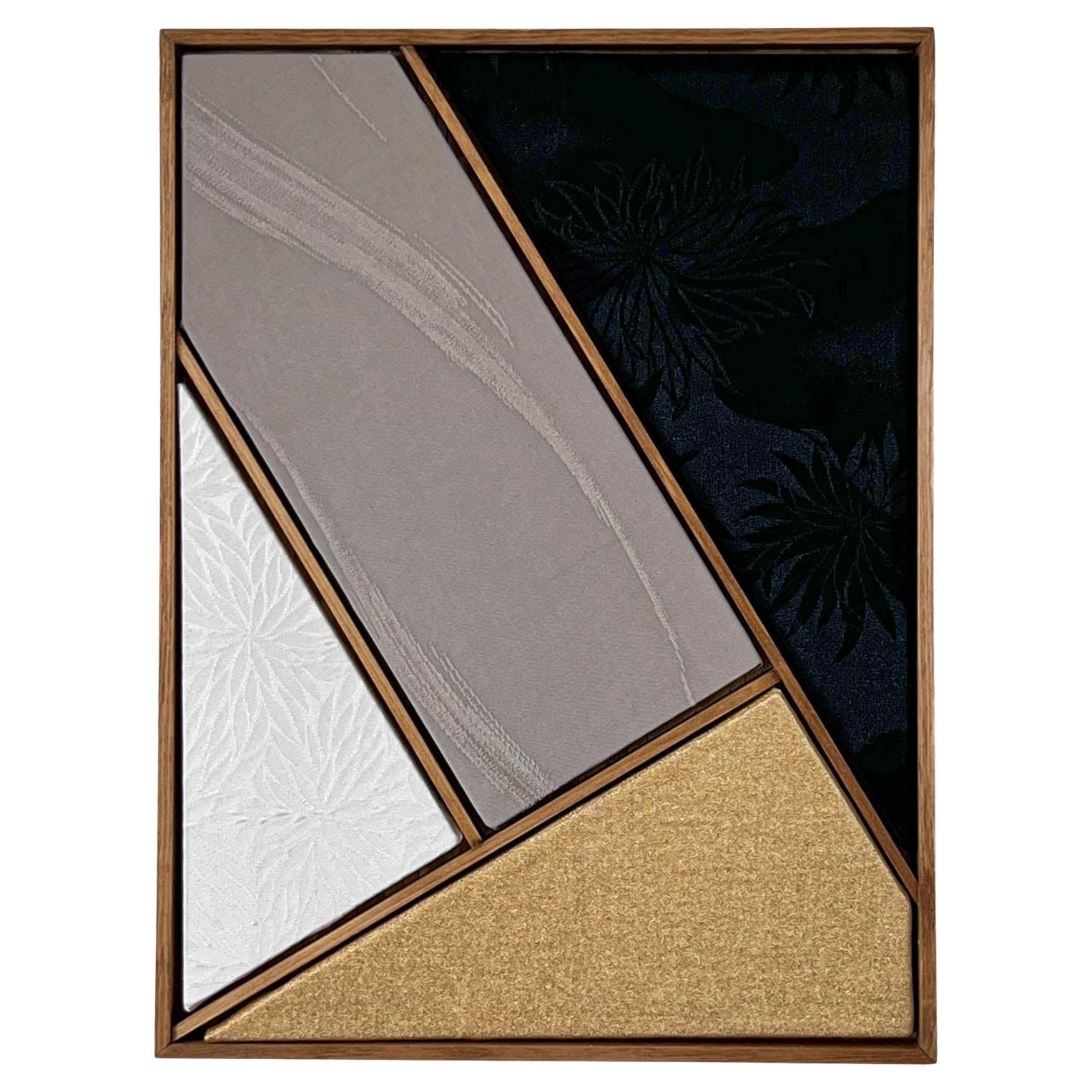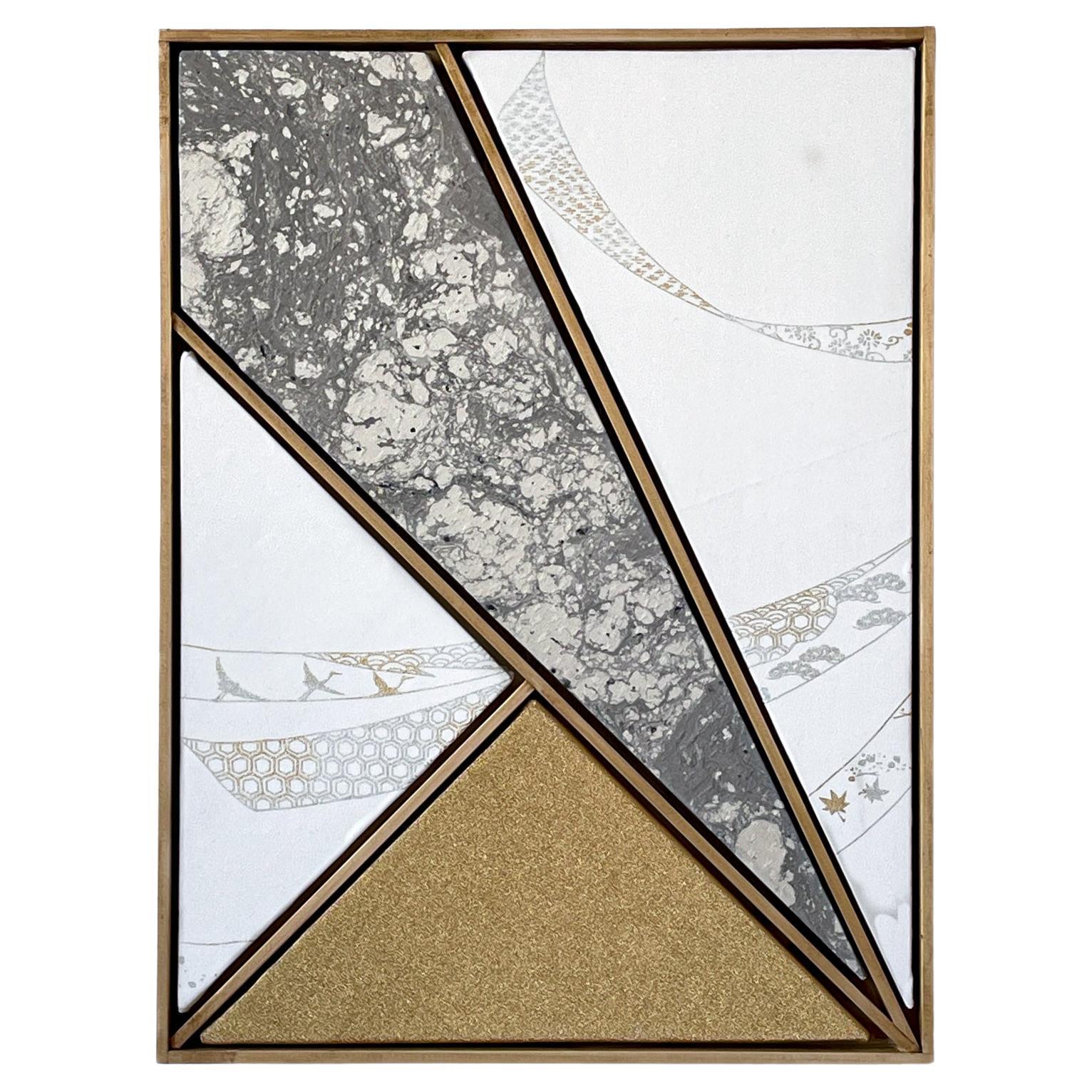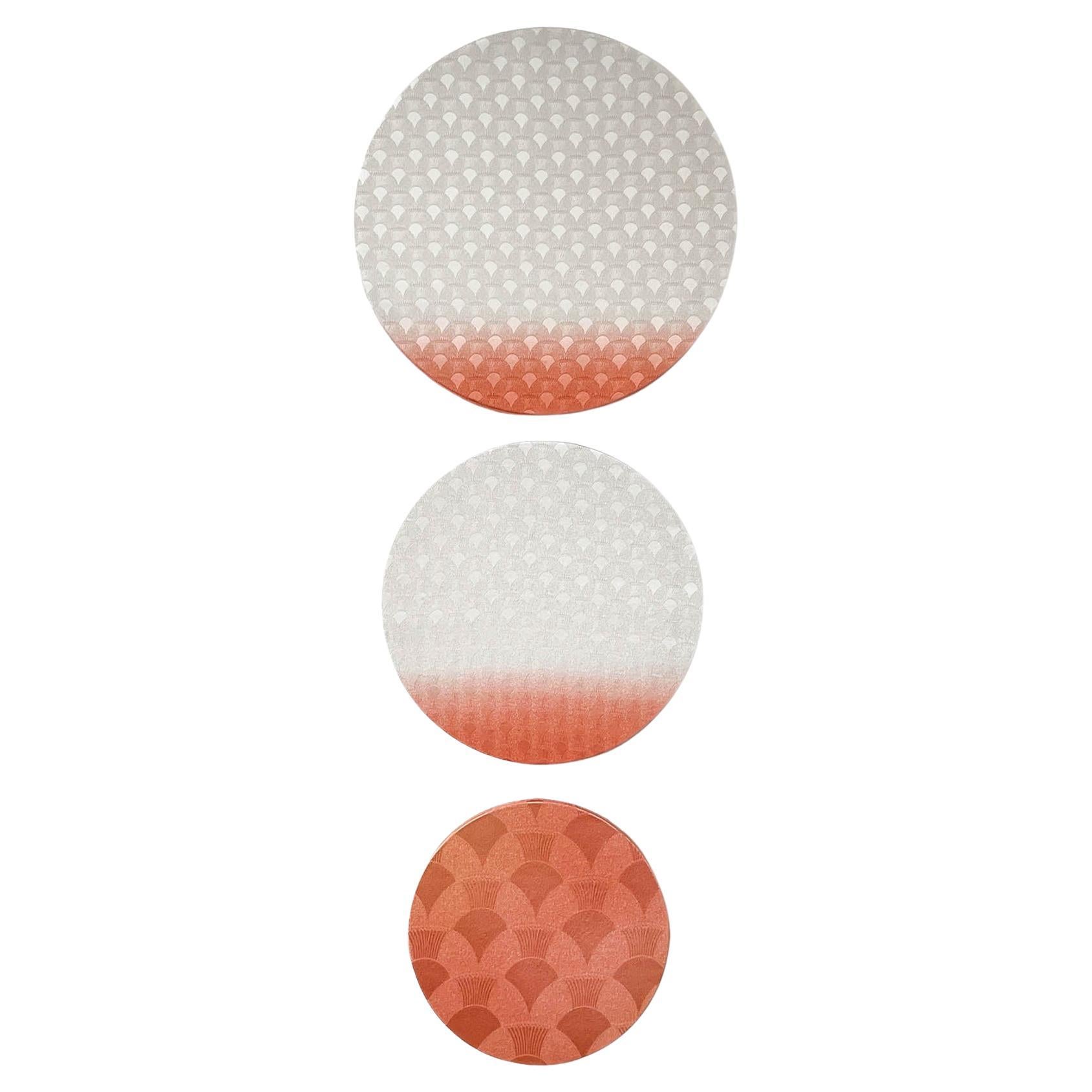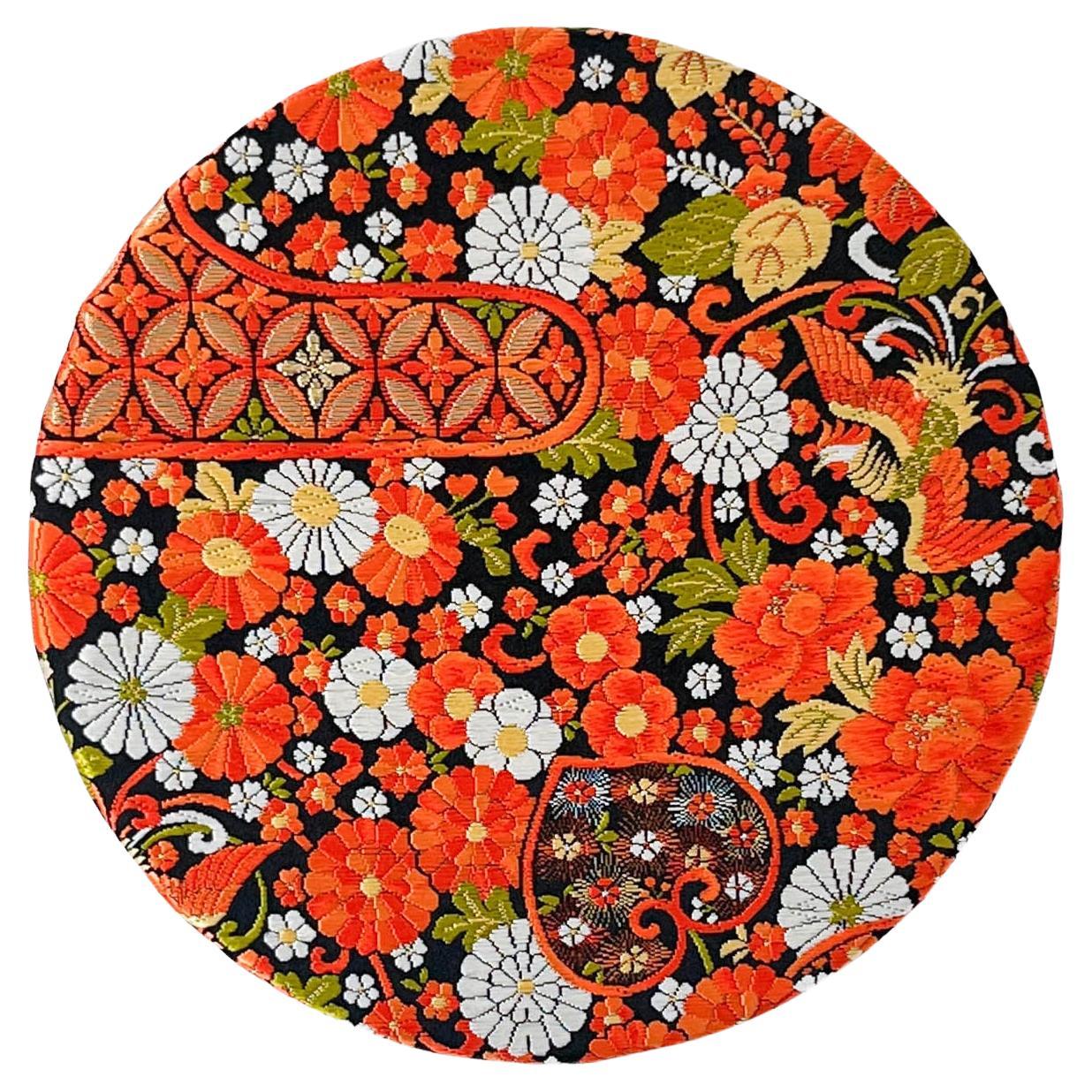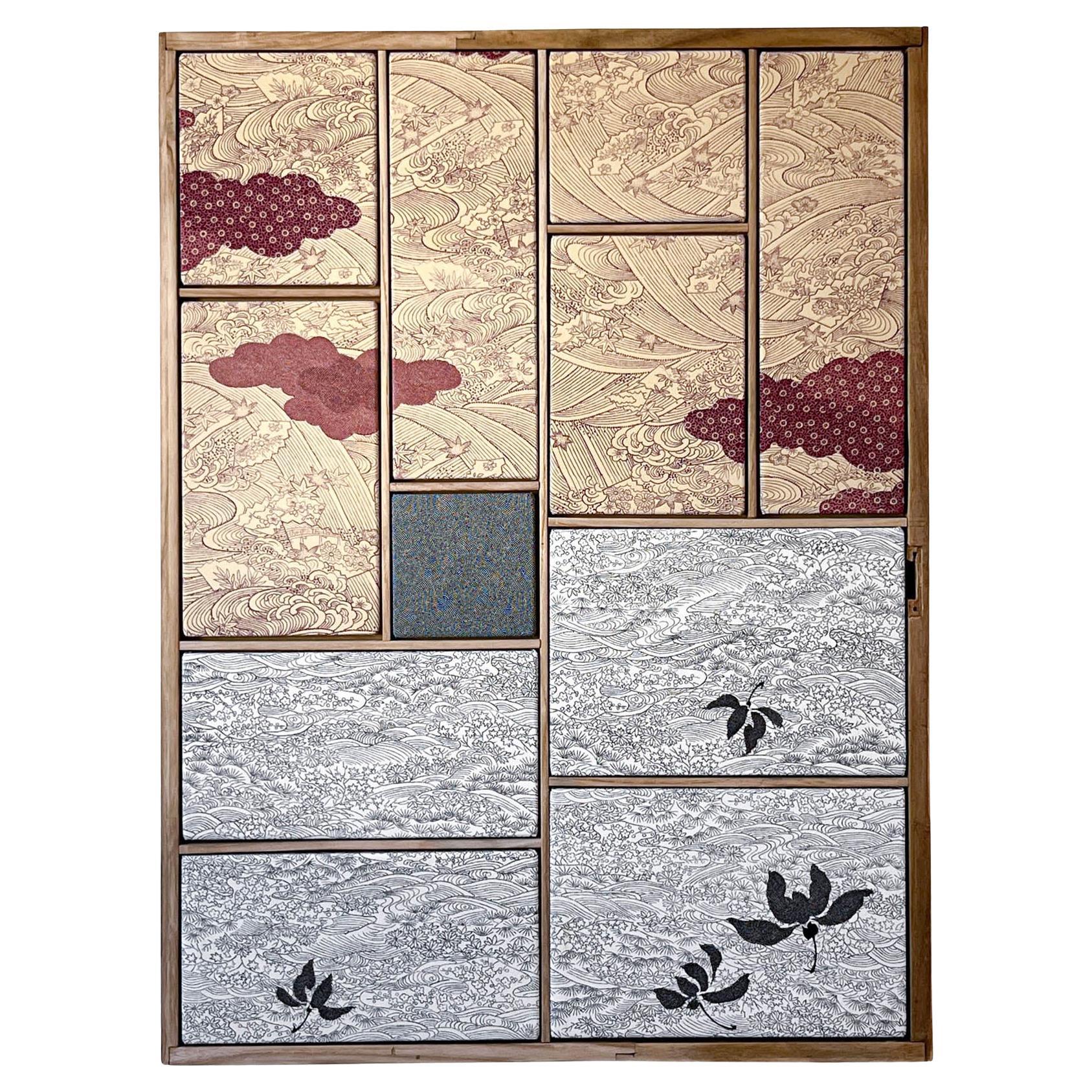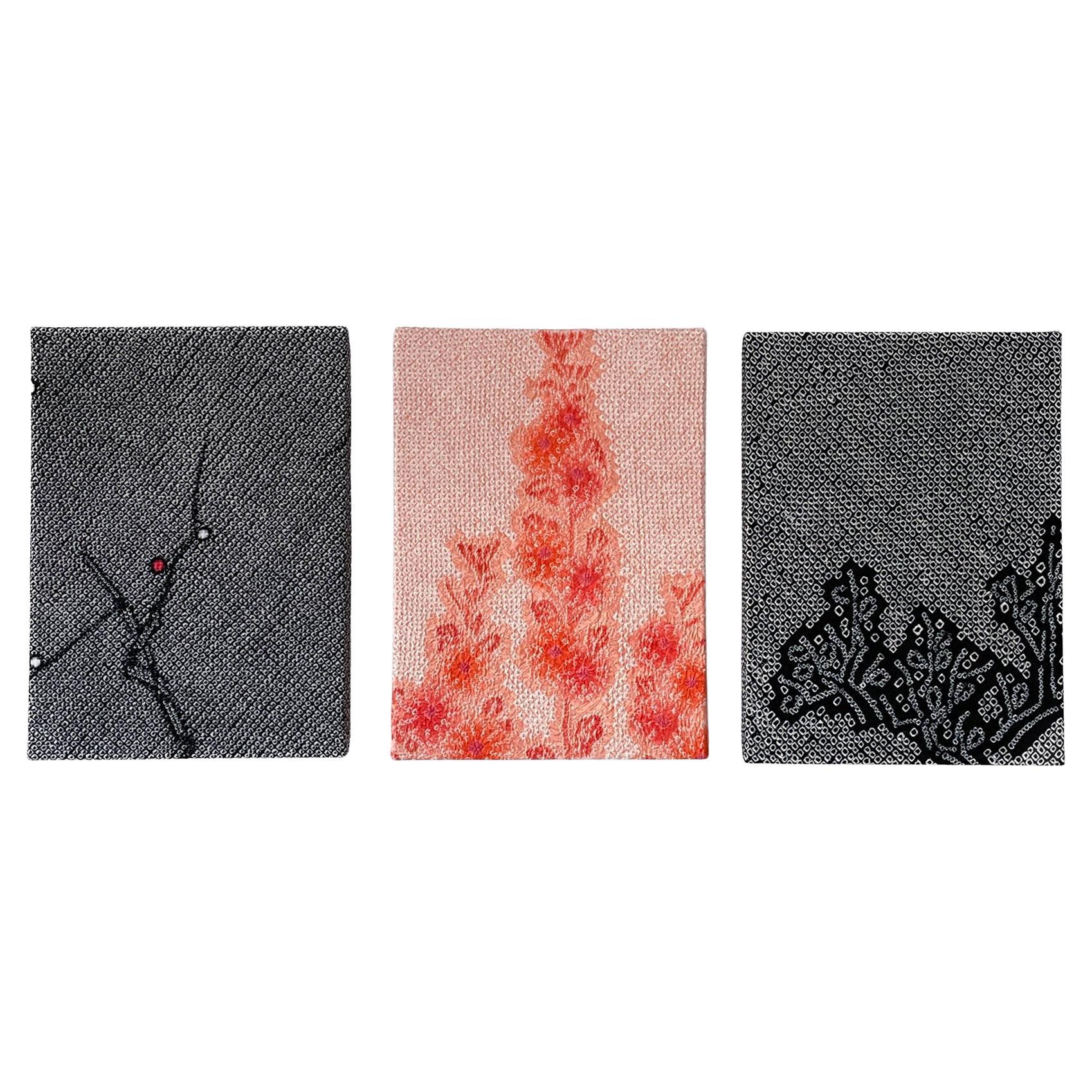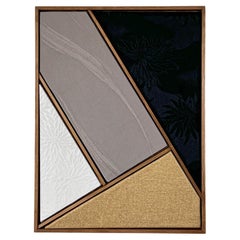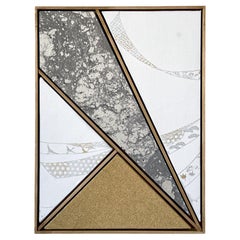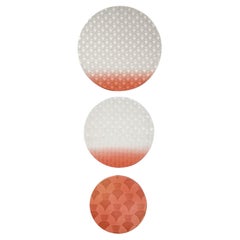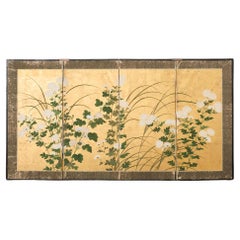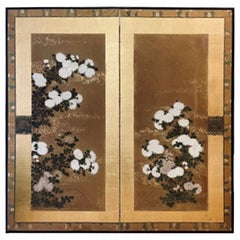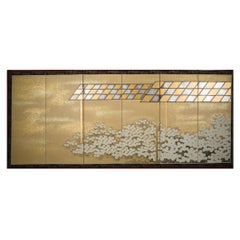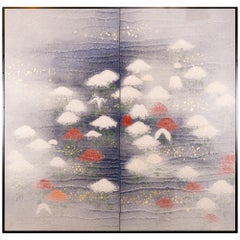Items Similar to VIntage kimono textile art "Geometry ~Chrysanthemums" by ikasu, white, red Japan
Want more images or videos?
Request additional images or videos from the seller
1 of 20
VIntage kimono textile art "Geometry ~Chrysanthemums" by ikasu, white, red Japan
$2,100
£1,615.46
€1,875.09
CA$2,961.50
A$3,317.38
CHF 1,742.41
MX$40,338.27
NOK 22,064.57
SEK 20,945.21
DKK 13,994.52
About the Item
This work is inspired by traditional Japanese natural symbolism, and is framed in paulownia wood originally used for a kimono chest-of-drawers.
It is elegantly framed with paulownia wood originally used for kimono chest-of-drawers, and is filled with storytelling and sense of luxury.
I used pieces of kimono that could no longer be used as clothing and kiritansu chest-of-drawers that would normally be discarded to create the ultimate upcycled piece.
<< Explanation and meaning of pattern and colors >>
Chrysanthemums, known as "kiku" in Japanese, hold significant cultural and symbolic meanings in Japan, particularly in the context of kimono patterns:
・Longevity and Immortality: Chrysanthemums are often associated with longevity and immortality in Japanese culture. Their ability to bloom late into the autumn season, even after other flowers have withered, symbolizes endurance and resilience. As a result, chrysanthemum motifs on kimono patterns may convey wishes for a long and prosperous life.
・Noble Virtues: Chrysanthemums have been cultivated in Japan for centuries and were favored by nobility and aristocrats. As such, they are often associated with noble virtues such as dignity, grace, and elegance. In kimono patterns, chrysanthemums may be used to evoke a sense of refinement and sophistication.
・Imperial Symbol: The chrysanthemum is the national flower of Japan and is closely associated with the Imperial Family. It appears on the Imperial Seal of Japan and is used as a symbol of the emperor and imperial household. Chrysanthemum motifs on kimono patterns may therefore evoke a sense of patriotism and reverence for the imperial institution.
・Seasonal Beauty: In addition to their symbolic meanings, chrysanthemums are admired for their beauty and variety. Different varieties of chrysanthemums bloom in a wide range of colors, shapes, and sizes, making them popular subjects for artistic expression. Chrysanthemum motifs on kimono patterns may capture the seasonal beauty of these flowers, particularly during the autumn months when they are in full bloom.
Overall, chrysanthemum motifs on kimono patterns carry rich cultural and symbolic significance, representing themes of longevity, nobility, patriotism, and seasonal beauty. They add depth and meaning to the design of the kimono, reflecting the wearer's appreciation for tradition, nature, and the artistry of Japanese craftsmanship.
<< About the frame >>
Kiritansu - chest-of-drawers for kimono, is traditionally made from paulownia wood, a uniquely Japanese material closely tied to the world of kimonos.
Paulownia wood is known as the lightest wood in Japan, prased for its natural luster, resistance to moisture, and resilience against cracking. Since ancient times, it has been used in crafting furniture, chests, and musical instruments.
During the Edo period, it became customary to store cherished kimonos in paulownia chests, which offered fire resistance and protection from moisture and insects.
Traditionally, when a daughter was born, a paulownia tree would be planted. Upon her marriage, the tree would be cut down, and the wood would be used to craft a chest for her as a wedding gift.
Following the Ansei Earthquake during the late Edo period in 1855, paulownia chests gained popularity due to their ability to withstand fires and even float in water, thereby safeguarding their contents during floods.
I use antique kiritansu that can’t be used as furniture anymore to create basis and frames for my works. It adds them even more authentic atmosphere of traditional wabisabi spirit. Can you feel it?
- Creator:Kimono ikasu (Artist)
- Dimensions:Height: 15.75 in (40 cm)Width: 36.62 in (93 cm)Depth: 1.58 in (4 cm)
- Style:Japonisme (In the Style Of)
- Materials and Techniques:
- Place of Origin:
- Period:
- Date of Manufacture:around 1960ies
- Condition:
- Seller Location:Setagaya City, JP
- Reference Number:1stDibs: LU10079243379592
About the Seller
No Reviews Yet
Vetted Professional Seller
Every seller passes strict standards for authenticity and reliability
1stDibs seller since 2024
- ShippingRetrieving quote...Shipping from: Setagaya City, Japan
- Return Policy
Authenticity Guarantee
In the unlikely event there’s an issue with an item’s authenticity, contact us within 1 year for a full refund. DetailsMoney-Back Guarantee
If your item is not as described, is damaged in transit, or does not arrive, contact us within 7 days for a full refund. Details24-Hour Cancellation
You have a 24-hour grace period in which to reconsider your purchase, with no questions asked.Vetted Professional Sellers
Our world-class sellers must adhere to strict standards for service and quality, maintaining the integrity of our listings.Price-Match Guarantee
If you find that a seller listed the same item for a lower price elsewhere, we’ll match it.Trusted Global Delivery
Our best-in-class carrier network provides specialized shipping options worldwide, including custom delivery.More From This Seller
View AllVIntage kimono textile art " Monochrome Geometry " by ikasu Gold, Grey, Japan
By Kimono ikasu
Located in Setagaya City, JP
This work is inspired by traditional Japanese nature colors symbolism, and is framed in paulownia wood originally used for a kimono chest-of-drawers.
It is filled with storytelling ...
Category
Vintage 1960s Japanese Japonisme Paintings and Screens
Materials
Silk, Wood
VIntage kimono textile art "Geometry ~Marble~" by ikasu Gold, White, Grey, Japan
By Kimono ikasu
Located in Setagaya City, JP
This work is inspired by traditional Japanese nature motifs symbolism, and is framed in paulownia wood originally used for a kimono chest-of-drawers.
It is elegantly framed with pau...
Category
Vintage 1960s Japanese Japonisme Paintings and Screens
Materials
Silk, Wood
Vintage kimono textile art " Plum Gradation " by ikasu Pink, White, Japan
By Kimono ikasu
Located in Setagaya City, JP
This canvas featuring a plum color gradient kimono showcases a unique decorative variation of the popular seigaiha (青海波) sea waves pattern.
The artwork got a Mr. & Mrs. Abe Arts & Cu...
Category
Vintage 1980s Japanese Japonisme Paintings and Screens
Materials
Canvas, Silk
Vintage obi textile art "Sacred Geometry ~Longevity~" by ikasu Orange, Japan
By Kimono ikasu
Located in Setagaya City, JP
About This Canvas
This unique canvas has been meticulously upcycled from a vintage obi—a traditional Japanese sash—entirely adorned with auspicious motifs and richly detailed floral ...
Category
Vintage 1970s Japanese Japonisme Decorative Art
Materials
Canvas, Silk
Antique kimono textile art " Waves and clouds ~Eternity~ " by ikasu Beige, Japan
By Kimono ikasu
Located in Setagaya City, JP
This work is inspired by traditional hand-dying technique edo-komon, and is framed in paulownia wood originally used for a kimono chest-of-drawers.
It is elegantly framed with paulo...
Category
Vintage 1920s Japanese Japonisme Paintings and Screens
Materials
Silk, Wood
Vintage kimono textile art "Flowers ~Life Circle~" by ikasu Pink, Black, Japan
By Kimono ikasu
Located in Setagaya City, JP
<< About this canvas >>
This canvas is crafted from three different haori fabrics, each adorned with a shibori dyeing flower motif going through entire fabric. These fabrics tell a ...
Category
Vintage 1970s Japanese Japonisme Paintings and Screens
Materials
Canvas, Silk
You May Also Like
Japanese Edo Four Panel Screen Flowering White Chrysanthemums
Located in Rio Vista, CA
19th century extraordinary Japanese late Edo/early Meiji period four-panel byobu screen featuring flowering white chrysanthemums painted in a moriage (raised pigment) style. The pain...
Category
Antique 19th Century Japanese Edo Paintings and Screens
Materials
Brass, Gold Leaf
Japanese Edo Period Two-Panel Screen with Chrysanthemums
Located in New York, NY
Japanese set of sliding doors that have been mounted as a screen in the early 20th century and the panels from the 19th-century.
ABOUT
This screen is indeed a masterpiece o...
Category
Antique 19th Century Japanese Japonisme Paintings and Screens
Materials
Wood
Japanese Six Panel Screen: Chrysanthemum Pavilion
Located in Hudson, NY
with applied gold and silver roof, light color and pigment on paper with gold flake and red frame.
Category
Early 20th Century Japanese Paintings and Screens
Materials
Paper
Japanese Two Panel Screen Chrysanthemums Through the Mist Obara Art Screen
Located in Hudson, NY
Japanese two panel screen: Chrysanthemums Through the Mist Obara Paper Art Screen. Surreal and masterful rendering of chrysanthemums cloaked in mist that varies in opacity made entirely of carefully arranged mulberry paper fibers in a Japanese art practice called Obara. Accented with gold leaf. Unique in terms of both execution and dreamlike mood. Made by Yamauchi Issei (b. 1929), stamped in the corner. Issei is well known throughout Japan as the leading artist in Obara Paper Art. Starting in 1948, he apprenticed with Fuji Tatsukichi, a leading proponent of the arts and crafts movement in Japan who worked to revive many cultural traditions on the brink of extinction. Issei started exhibiting in the Nitten in 1953, won the gold medal in 1963, and eventually became a juror. His artwork was given as a gift to the Showa Emperor of Japan, as well as dignitaries such as General Douglas MacArthur...
Category
Mid-20th Century Japanese Showa Paintings and Screens
Materials
Wood, Paper
Japanese Two Panel Screen Summer Flowers on Silver
Located in Hudson, NY
Japanese two panel screen: Summer flowers on silver. Meiji period painting (1868 - 1912) of Summer flowers including morning glories and daisies against a garden fence. Signature and...
Category
Antique Early 1900s Japanese Meiji Paintings and Screens
Materials
Silver Leaf
Vintage Japanese Silk Meisen Kimono with Geometrical Design
Located in Atlanta, GA
A vintage Japanese formal silk Kimono in an "ink green" color with striking geometrical design. The garment is hand-stitched Meisen kimono from a crepe l...
Category
Mid-20th Century Japanese Japonisme Textiles
Materials
Silk
More Ways To Browse
Textile Art
Vintage Textile Art
Japanese Kimono
Japanese Used Kimono
Vintage Japanese Flower Art
Emperor Japan
Upcycle Art
Chrysanthemum Pattern
Framed Japanese Textiles
Vintage Kimonos
Chrysanthemum Painting
Red Kimono
Vintage Silk Screens
Vintage Virtue
White Kimono
Vintage Plant Waterer
Fire Screen Vintage
Vintage Fire Screen Screens
